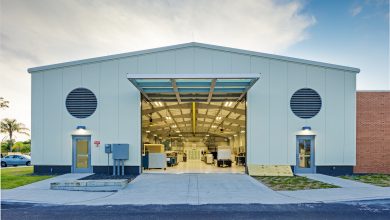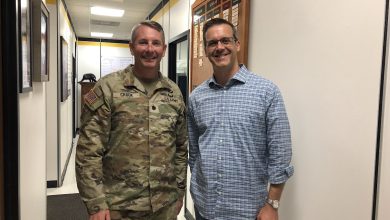Emerging Engineering
Biomedical engineering has recently emerged as a discrete discipline. Closing the gap between engineering and medicine, the field has evolved from an interdisciplinary specialization to a field in itself. From applications in artificial organs and biocompatible prostheses to diagnostic and therapeutic medical devices such as clinical equipment and micro-implants, this joining of engineering with medicine offers potential to ease pain, produce more accurate diagnoses and, often, save time and money.
The discipline also tops Forbes’ most valuable college majors list and is recognized as a growth field by the U.S. Bureau of Labor Statistics.
This fall, the College of Engineering introduces biomedical engineering degree programs at the master’s and doctoral levels, joining the existing undergraduate program.
“Students are attracted to this field because of the endless possibilities for advancement in health care diagnostic methods, new monitoring and therapeutic techniques as well as the opportunity to make a difference in people’s lives,” said Fredric Ham, dean of the College of Engineering and Harris Professor of Electrical Engineering. “I have personally spent a significant portion of my research career working in this field in the area of biosensors.”
Other Florida Tech faculty members have also been involved in biomedical-related research for many years. Kunal Mitra, founder of Florida Tech’s biomedical research program, recently earned a patent for a laser-based skin cancer detection and treatment system. The system is designed to reduce or replace costly, invasive biopsies that detect skin cancer cells in a patient. It reduces diagnosis time by making results available immediately so that treatment may begin sooner.
“There is a sharp contrast in the absorption images of normal cells and cancerous cells, which can be detected using the short-pulse laser system. The system can image and display healthy cells to reduce the need for painful biopsies,” explains Mitra.
Amir Sajjadi ’12 Ph.D. has also harnessed the power of short-pulse lasers for biomedical engineering advances in the diagnosis and treatment of subcutaneous tumors. As part of his dissertation research, he developed a novel technology that uses a focused ultra-short pulse laser beam to precisely remove a tumor, which prevents damage to the surrounding healthy tissue. The technique allows for the removal of subcutaneous tumors without any incision or surgery. He also advanced a time-resolved optical imaging technique using short-pulse lasers by employing gold nanoparticles as viable contrast agents. “Combining these two techniques provides an unprecedented tool for early cancer detection and removal,” he said.
Sajjadi’s work has been published in three leading scientific journals, 12 peer-reviewed conference proceedings and has been presented at 15 conferences. “In this challenging research, I have been using a variety of experimental, computational and analytical methods. As a result, not only have I acquired a deep understanding of the physiology and cellular infrastructure of living organisms, but also I have obtained extensive experience with some sophisticated experimental methods and
computational techniques,” he said.
Another alumnus forging opportunities in biomedical engineering is Ronald Richardson ’84. Following undergraduate work in pre-professional biology at Florida Tech, he enrolled in the biomedical engineering program at Duke University’s Pratt School of Engineering, earning a master’s degree in 1992. His master’s thesis was on encapsulating implantable biosensors. “It was very interdisciplinary. I combined biochemistry, physiology, electrical engineering, thermodynamics and more for the experimental design and analysis,” he said.
Later, in the ’90s, Richardson became a sort of “go between,” translating needs and capabilities for clinical users and medical device manufacturers in the U.S. Army Medical Materiel Agency. As program manager for integrated clinical systems, he prioritized diagnostic imaging and clinical laboratory equipment requirements for fixed and field medical treatment facility capital investment equipment programs.
“In biomedical engineering, you work across boundaries and need a solid background and knowledge of almost all the engineering disciplines as well as biology and medicine,” said Richardson. “Every problem presents unique and thought-provoking challenges. What’s rewarding is that you ultimately contribute to health care delivery and extending and improving quality of life for millions of people.”
Karen Rhine
By the Numbers
#1
Last spring, Forbes named the five most valuable college majors and cited biomedical engineering as No. 1. Calling it a “major that is most worth your tuition, time and effort,” the article noted a starting median pay of $53,800 and a mid-career median pay of $97,800.
62%
The U.S. Bureau of Labor Statistics projects the field’s employment growth at 62 percent over the next decade—much higher than the average for all occupations.
(See www.bls.gov/ooh/architecture-and-engineering/biomedical-engineers.htm)





